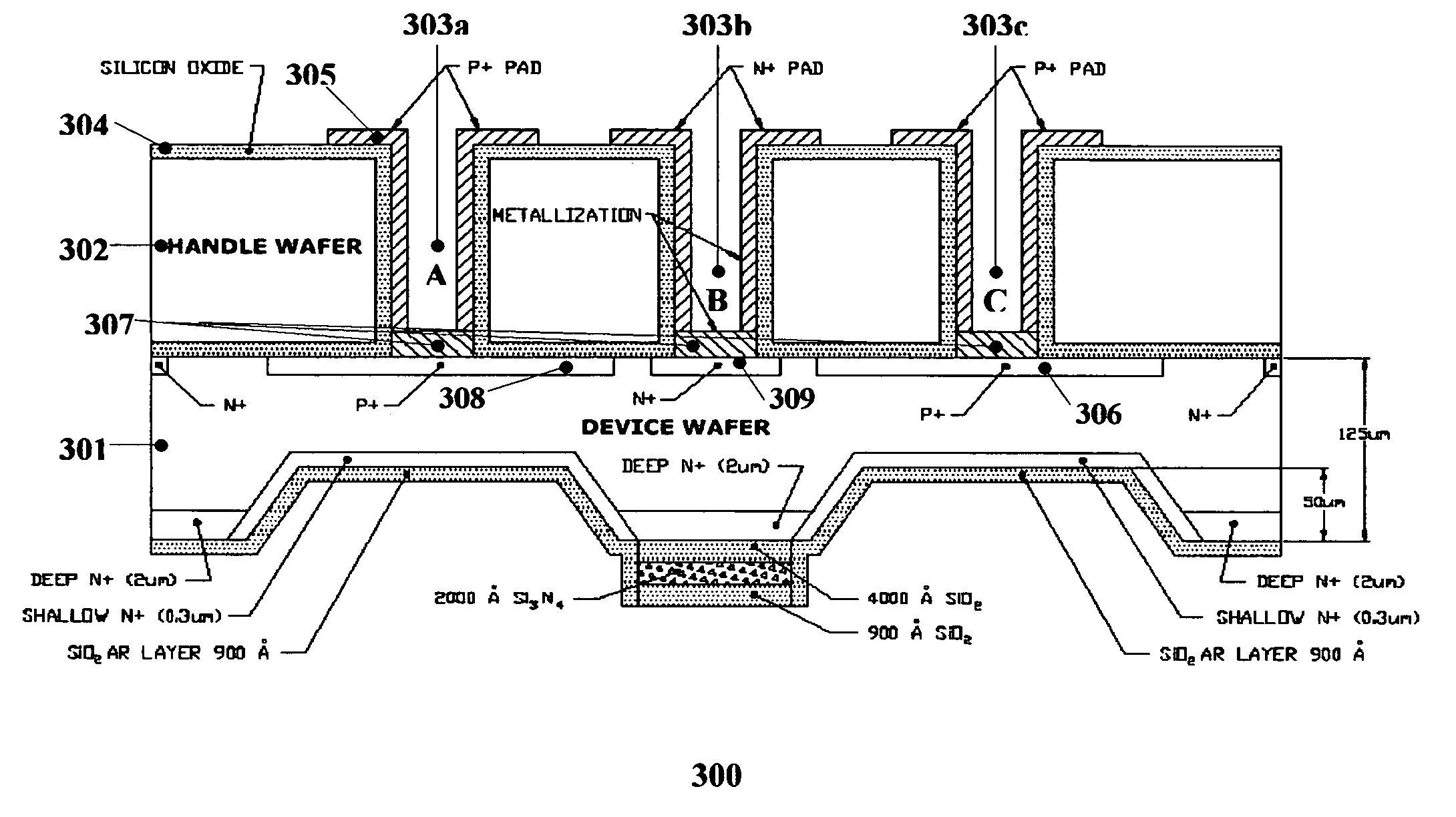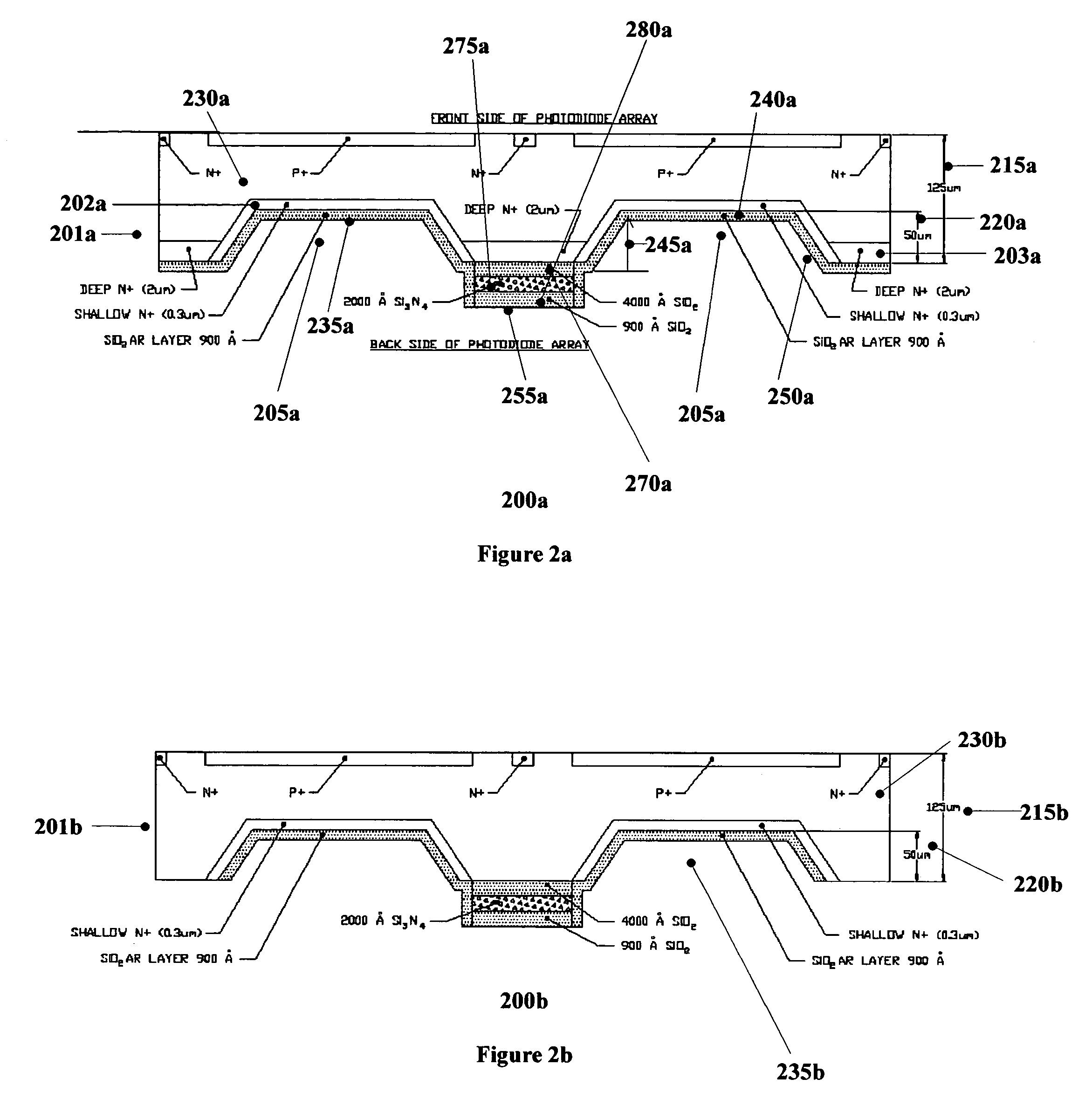Thin wafer detectors with improved radiation damage and crosstalk characteristics
a technology of crosstalk and detectors, which is applied in the direction of photoelectric discharge tubes, instruments, radiation controlled devices, etc., can solve the problems of adversely affecting the performance of detectors, detectors showing an increased reverse-bias current, and increased forward voltage drop, so as to reduce radiation damage susceptibility, reduce crosstalk effects, and reduce dark current
- Summary
- Abstract
- Description
- Claims
- Application Information
AI Technical Summary
Benefits of technology
Problems solved by technology
Method used
Image
Examples
Embodiment Construction
[0028]This application hereby incorporates by reference co-pending application, entitled “FRONT ILLUMINATED BACK SIDE CONTACT THIN WAFER DETECTORS”, which also relies on, for priority, U.S. Provisional Application 60 / 468,181, having a priority date of May 5, 2003, entitled “DETECTORS WITH IMPROVED RADIATION DAMAGE AND CROSSTALK CHARACTERISTICS”. The invention described therein comprises a plurality of front side illuminated photodiodes, optionally organized in the form of an array, with both the anode and cathode contact pads on the back side. The front side illuminated, back side contact (FSL-BSC) photodiodes have superior performance characteristics, including less radiation damage, less crosstalk using a suction diode, and reliance on reasonably thin wafers. The invention, as described therein, is a photodiode array having a substrate with at least a front side and a back side; a plurality of photodiodes integrally formed in the substrate forming the array wherein each photodiode...
PUM
 Login to View More
Login to View More Abstract
Description
Claims
Application Information
 Login to View More
Login to View More - R&D
- Intellectual Property
- Life Sciences
- Materials
- Tech Scout
- Unparalleled Data Quality
- Higher Quality Content
- 60% Fewer Hallucinations
Browse by: Latest US Patents, China's latest patents, Technical Efficacy Thesaurus, Application Domain, Technology Topic, Popular Technical Reports.
© 2025 PatSnap. All rights reserved.Legal|Privacy policy|Modern Slavery Act Transparency Statement|Sitemap|About US| Contact US: help@patsnap.com



